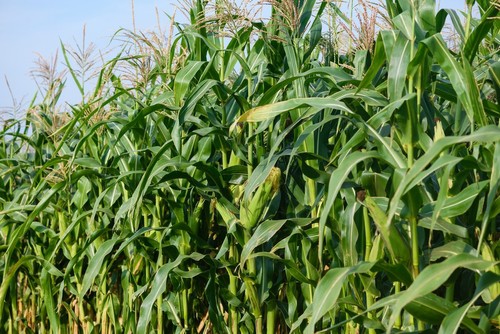Bottom corn leaves turning yellow is a common issue that many gardeners face. Corn is a nutrient-hungry crop that requires a lot of nitrogen to grow, and when it doesn’t get enough, the leaves start to turn yellow. However, nitrogen deficiency is not the only cause of yellowing corn leaves.
If you notice yellowing of the bottom corn leaves, it is essential to identify the underlying cause to take appropriate measures to prevent the spread of the issue. Understanding the reasons behind the yellowing of corn leaves can help you take the necessary steps to prevent it from happening again.
Key Takeaways
- Yellowing of bottom corn leaves is a common problem that can be caused by various factors.
- Identifying the underlying cause of yellowing corn leaves is essential to take appropriate measures to prevent the spread of the issue.
- Proper watering, nutrient management, and pest control are some of the effective ways to prevent yellowing of corn leaves.
You shouldn’t miss on these other popular posts:
Understanding Corn Plant Yellowing
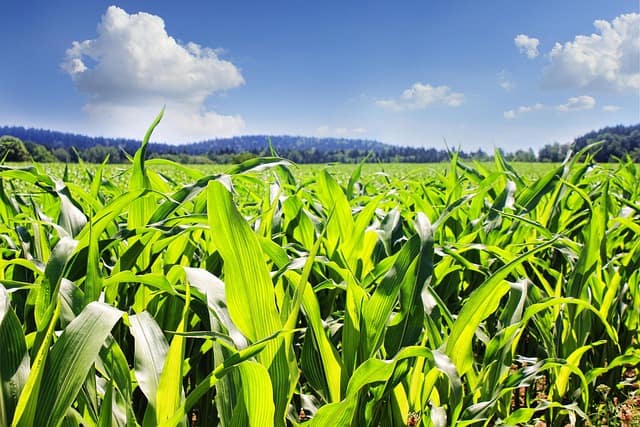
When the bottom leaves of corn plants turn yellow, it can be a sign of a nutrient deficiency. The most common nutrient deficiency in corn plants is nitrogen.
Corn plants are heavy feeders of nitrogen, and when there is not enough nitrogen in the soil, the plant will take it from the older leaves to support the growth of the newer leaves. This results in yellowing leaves at the bottom of the plant.
Another common reason for yellowing leaves in corn plants is a lack of water. Corn plants require a lot of water, especially during the growing season. If the soil is too dry, the plant will start to show signs of stress, including yellowing leaves.
Pests and diseases can also cause yellowing leaves in corn plants. Corn rootworm and corn borer are two common pests that can damage the roots and leaves of corn plants. Diseases such as gray leaf spot and northern corn leaf blight can also cause yellowing leaves in corn plants.
To determine the cause of yellowing leaves in corn plants, it is important to look at the entire plant. If the yellowing is limited to the bottom leaves, it is likely a nutrient deficiency. If the entire plant is yellowing, it may be due to a lack of water or a pest or disease problem.
In general, it is important to provide corn plants with the nutrients, water, and care they need to grow healthy and strong. This includes regular fertilization, watering, and pest and disease management. By taking good care of corn plants, growers can help prevent yellowing leaves and ensure a healthy crop.
Bottom Corn Leaves Turning Yellow – 4 Common Problems
Yellowing corn leaves are a common problem that can occur for several reasons. In this section, we will discuss some of the most common causes of yellowing corn leaves.
1. Nutrient Deficiencies
One of the most common reasons for yellowing corn leaves is nutrient deficiencies. Corn plants require a balance of various nutrients to grow properly. If they lack any essential nutrients, their leaves may turn yellow. The most common nutrient deficiencies that cause yellowing leaves in corn plants are nitrogen, potassium, and sulfur.
Nitrogen is essential for the growth of corn plants, and its deficiency can cause yellowing of the lower leaves. Potassium deficiency can also cause yellowing of the leaves, but it usually affects the tips and edges of the leaves.
Sulfur deficiency can cause yellowing of the leaves, but it is less common than nitrogen and potassium deficiencies.
2. Watering Issues
Watering issues are another common cause of yellowing corn leaves. Overwatering or underwatering can cause stress to corn plants, leading to yellowing leaves. If corn plants are overwatered, their roots may become waterlogged, leading to root rot and yellowing leaves.
On the other hand, if corn plants are underwatered, they may not receive enough water to absorb the required nutrients, leading to yellowing leaves.
3. Pests and Diseases

Pests and diseases can also cause yellowing corn leaves. Insects such as aphids and nematodes can damage corn plants, leading to yellowing leaves. Diseases such as corn smut and leaf blight can also cause yellowing of the leaves.
It is important to identify the pests and diseases that are affecting corn plants and take appropriate measures to control them.
4. Environmental Factors
Environmental factors such as drought, summer heat, and shade can also cause yellowing of corn leaves. Drought and summer heat can cause stress to corn plants, leading to yellowing leaves. Shade can also cause yellowing of the leaves, as corn plants require full sunlight to grow properly.
Identifying Nutrient Deficiencies
When bottom corn leaves turn yellow, it’s a sign that the plant is experiencing nutrient deficiencies. Identifying the specific nutrient deficiency is essential to rectify the issue.
1. Nitrogen Deficiency
Nitrogen is a crucial nutrient for corn plants, and its deficiency is the most common cause of yellowing of bottom leaves. The symptoms include a V-shaped yellowing pattern starting from the tip of the leaf and moving towards the midrib. The leaves may also become pale green, and the plant growth may be stunted.
To prevent nitrogen deficiency, farmers can use nitrogen fertilizer. Applying the right amount of nitrogen at the right time can help prevent nutrient deficiencies.
2. Potassium Deficiency
Potassium is another essential nutrient for corn plants. Its deficiency can cause yellowing of the leaf margins, which then spreads towards the center of the leaf. The leaves may also develop brown spots, and the plant growth may be stunted.
To prevent potassium deficiency, farmers can use potassium fertilizer. Applying the right amount of potassium at the right time can help prevent nutrient deficiencies.
3. Sulfur and Zinc Deficiency
Sulfur and zinc are also critical nutrients for corn plants. Their deficiency can cause yellowing of the leaves, but the pattern is different from nitrogen and potassium deficiency.
Zinc deficiency symptoms can be found on the upper leaves and will present itself as white bands extending along the leaves. Sulfur deficiency is often confused with nitrogen deficiency during early plant development, but it is the lower leaves (older leaves) that turn yellow when there is a nitrogen deficiency.
To prevent sulfur and zinc deficiencies, farmers can use sulfur and zinc fertilizers. Applying the right amount of these nutrients at the right time can help prevent nutrient deficiencies.
Watering-Related Issues
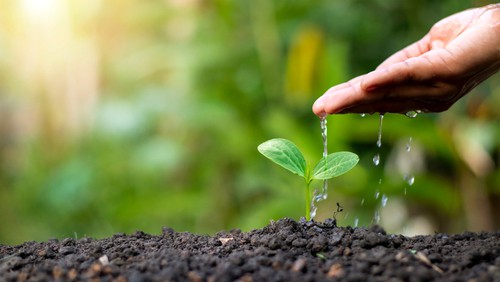
When corn plants start to show yellowing on their bottom leaves, the cause could be related to watering. Watering-related issues can either be due to overwatering, underwatering, or unfavorable weather conditions.
1. Overwatering
Overwatering is a common mistake that many gardeners make. When corn plants are overwatered, the roots become waterlogged and cannot absorb the necessary nutrients from the soil. As a result, the leaves will start to turn yellow and wilt. Overwatering can also lead to fungal diseases, which can further damage the plant.
To avoid overwatering, it is important to ensure that the soil is well-drained and that excess water can escape. Gardeners should also avoid watering the plants too frequently and should instead wait until the soil is dry to the touch before watering again.
2. Underwatering
Underwatering is another common watering-related issue that can cause yellowing of the bottom leaves. When corn plants do not receive enough water, the soil becomes dry, and the plants cannot absorb the necessary nutrients. The leaves will start to turn yellow and wilt as a result.
To avoid underwatering, gardeners should ensure that the soil is consistently moist. They should also monitor the weather conditions and water the plants more frequently during hot and dry periods.
3. Effects of Weather Conditions
Weather conditions can also have a significant impact on the watering needs of corn plants. During periods of drought, for example, the plants will require more water to survive. Conversely, during periods of excessive rain, the soil may become waterlogged, and the plants may experience root rot.
To prevent weather-related watering issues, gardeners should monitor the weather conditions and adjust their watering schedule accordingly. They should also ensure that the soil is well-drained and that excess water can escape.
Pests and Diseases in Corn Plants
When corn plants start to develop yellowing leaves, it could be a sign of a pest or disease infestation. Here are some common pests and diseases that affect corn plants.
1. Insect Infestation
Corn earworms are a common pest that can cause damage to corn plants. These pests can cause damage to the leaves, tassels, and ears of the corn plant. Another common pest is aphids, which can cause yellowing of the leaves and stunted growth.
To control these pests, it is important to use insecticides and to monitor the plants regularly.
2. Fungal and Bacterial Diseases

Fungal and bacterial diseases can also cause yellowing of the leaves in corn plants. Blight is a fungal disease that can cause yellowing and browning of the leaves. Bacterial infections can also cause yellowing of the leaves and stunted growth.
To prevent these diseases, it is important to practice crop rotation and to use fungicides and bactericides.
3. Root Rot and Other Diseases
Root rot is a common disease that affects corn plants. This disease is caused by a fungus that attacks the roots of the plant, causing yellowing of the leaves and stunted growth.
Nematodes are another common pest that can cause damage to the roots of the plant, leading to yellowing of the leaves. To prevent these diseases, it is important to practice good soil management and to use fungicides and nematicides.
Environmental Factors Affecting Corn Health
When it comes to corn health, environmental factors play a crucial role. Here are some of the key factors that can affect the health of corn plants.
1. Weather and Climate
Corn plants require warm weather to grow and thrive. Cool weather can slow down the growth of the plant and make it more susceptible to diseases. On the other hand, summer heat can cause the soil to dry out and make it difficult for the plant to absorb nutrients.
In addition, heavy rainfall can cause waterlogging and make it difficult for the roots to breathe.
2. Soil Conditions
Soil conditions are critical for the growth of corn plants. The soil should be well-draining and rich in organic matter. A soil test can help determine the pH level and nutrient content of the soil.
If the soil is deficient in nutrients, it can lead to yellowing of the lower leaves. In addition, soil compaction can make it difficult for the roots to grow and absorb nutrients.
3. Lighting Conditions
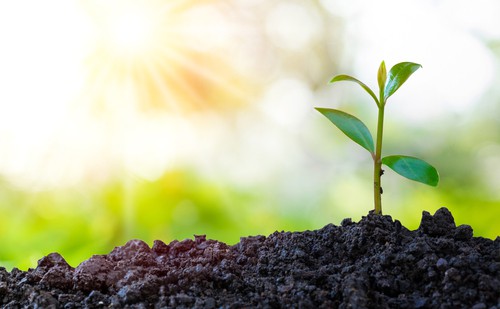
Corn plants require full sun to grow and thrive. Shade can slow down the growth of the plant and make it more susceptible to diseases. In addition, uneven lighting can cause the plant to grow unevenly and lead to stunted growth.
Overall, environmental factors such as weather, soil conditions, and lighting can have a significant impact on the health of corn plants. It is important to monitor these factors and take appropriate measures to ensure that the plants are healthy and thriving.
Prevention and Treatment Strategies
1. Proper Watering and Fertilizing
Proper watering and fertilizing are essential to prevent yellowing of bottom corn leaves. Overwatering or underwatering can cause stress to the plant, leading to yellowing of the leaves.
Corn plants require adequate water to grow and produce healthy ears, but they can only survive if there is also air in the soil. The soil should be moist but not waterlogged. The best time to water corn plants is in the morning or evening when the temperature is cooler.
Fertilizing corn plants with high nitrogen fertilizer can also help prevent yellowing of bottom leaves. Side dressing with a high nitrogen fertilizer can help supply the plant with the necessary nutrients for healthy growth.
However, it is essential to follow the recommended application rates to avoid over-fertilizing, which can cause yellowing of the leaves.
2. Pest and Disease Control
Pests and diseases can also cause yellowing of bottom corn leaves. It is essential to monitor the plants regularly for any signs of pests or diseases. Organic insecticides and chemical pesticides can be used to control pests, but it is essential to follow the recommended application rates to avoid damaging the plant.
Common diseases that can cause yellowing of the leaves include gray leaf spot, northern corn leaf blight, and common rust. Fungicides can be used to control these diseases, but it is essential to follow the recommended application rates and timing.
3. Soil and Environmental Management
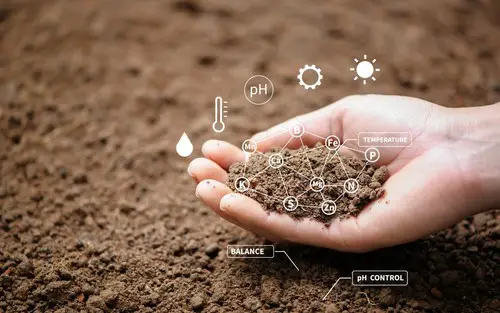
Soil and environmental management can also help prevent yellowing of bottom corn leaves. Adding compost or manure to the soil can help improve soil fertility and structure, which can lead to healthier plants. Mulching can also help retain moisture in the soil and prevent water stress.
It is also essential to manage the soil pH, as high soil pH can cause nutrient deficiencies, including zinc deficiency, which can cause yellowing of the leaves. Soil testing can help determine the soil pH and nutrient levels, which can guide the application of appropriate soil amendments.
Prevention is always better than cure, and implementing these prevention and treatment strategies can help prevent yellowing of bottom corn leaves and ensure healthy plant growth.
Conclusion
In conclusion, yellowing of the lower leaves of corn plants is a common occurrence, and it can be caused by a variety of factors. The most common cause of yellowing leaves in corn plants is nitrogen deficiency, which can be easily remedied by applying nitrogen fertilizer.
It is important to note that over-fertilization can also cause yellowing of the leaves, so it is essential to follow the recommended application rates for nitrogen fertilizer. Additionally, drought stress can also cause yellowing of the leaves, as the plant is not able to uptake water and nutrients effectively.
Other factors that can contribute to yellowing of the lower leaves of corn plants include pests, diseases, and poor growing conditions. It is important to monitor the plants regularly and take action if any signs of pests or diseases are observed.
Overall, maintaining proper growing conditions, including adequate watering, fertilization, and pest control, is essential for healthy corn plant growth. By following these guidelines, farmers and gardeners can ensure that their corn plants remain healthy and productive, with minimal yellowing of the leaves.
Frequently Asked Questions
What are the common causes of yellowing bottom corn leaves?
Yellowing of bottom corn leaves can be caused by various reasons such as nutrient deficiency, overwatering, underwatering, pests, diseases, and environmental stress. The most common cause of yellowing bottom corn leaves is a lack of nitrogen.
How to identify nitrogen deficiency in corn plant?
Nitrogen deficiency in corn plants can be identified by the yellowing of bottom leaves, stunted growth, and reduced yield. The yellowing of leaves starts from the tip and progresses towards the base.
The leaves become pale green or yellowish-green and may develop brown or yellow spots. The veins of the leaves remain green.
What are the symptoms of potassium deficiency in corn?
Potassium deficiency in corn plants can be identified by the yellowing of leaf margins and tips, followed by the development of brown or yellow spots. The leaves may curl and become brittle. The stalks of the plant may become weak and prone to lodging.
What is the recommended nitrogen fertilizer for corn?
The recommended nitrogen fertilizer for corn is ammonium nitrate or urea. The amount of nitrogen fertilizer required depends on the soil type, climate, and growth stage of the corn plant. A soil test is recommended to determine the appropriate amount of nitrogen fertilizer needed.
How to prevent corn leaves from turning yellow and brown?
To prevent corn leaves from turning yellow and brown, it is important to maintain proper soil moisture and pH levels. Regular fertilization with nitrogen and potassium is essential. Crop rotation and the use of disease-resistant varieties can also help prevent yellowing of corn leaves.
Why are the lower leaves of my corn plant turning yellow?
The lower leaves of corn plants may turn yellow due to a lack of nitrogen. Nitrogen is an essential nutrient for corn plants, and a deficiency can cause yellowing of leaves. Overwatering or underwatering, pests, diseases, and environmental stress can also cause yellowing of corn leaves.

Hey, I’m Lisa and I’ve been an avid gardener for over 30 years. I love writing, talking and living in the garden! Feel free to connect with me on my socials below

